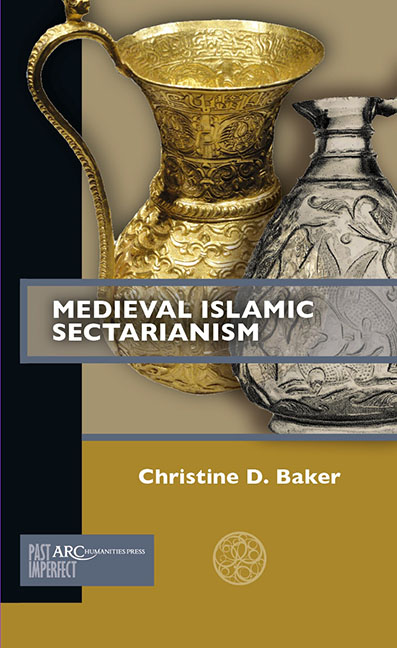Book contents
- Frontmatter
- Contents
- Acknowledgements and a Note on Transliteration
- Timeline
- Introduction
- Chapter 1 When did Sunnism Become Orthodox?
- Chapter 2 Non-Sunni Islams Before the Tenth Century
- Chapter 3 The Fatimids and Isma‘ili Shi‘ism in North Africa
- Chapter 4 The Buyids and Shiʿism in Baghdad
- Conclusion. Reactions to the Shiʿi Century
- Glossary of Key Terms
- Further Reading
Chapter 2 - Non-Sunni Islams Before the Tenth Century
Published online by Cambridge University Press: 20 November 2020
- Frontmatter
- Contents
- Acknowledgements and a Note on Transliteration
- Timeline
- Introduction
- Chapter 1 When did Sunnism Become Orthodox?
- Chapter 2 Non-Sunni Islams Before the Tenth Century
- Chapter 3 The Fatimids and Isma‘ili Shi‘ism in North Africa
- Chapter 4 The Buyids and Shiʿism in Baghdad
- Conclusion. Reactions to the Shiʿi Century
- Glossary of Key Terms
- Further Reading
Summary
It took centuries for a coherent and unified concept of Sunni Islam to develop and even longer for the creation and promulgation of mechanisms to spread and enforce those ideas. During this time, other interpretations of Islam—other Islams—remained popular. Many of these religious movements were linked with political opposition to either the ʾUmayyad or ʿAbbasid dynasty, both of which were seen by some Muslims as having usurped power from more legitimate leaders.
While, to some extent, we could consider Sunni Islam to be politically dominant before the tenth century and the rise of the Fatimids and the Buyids, these two dynasties did not arise in a vacuum. They developed out of a myriad of political and religious opposition movements popular across the Muslim world. Sunni Islam was also far from unified: it only appears so in retrospect.
This chapter surveys the many forms of Islam popular before the tenth century, focusing on movements that seemed to view themselves as existing outside any kind of developing Sunni consensus. Furthermore, this chapter will argue that, although proto-Shiʿism/Shiʿism was a significant part of political and religious opposition to the ʾUmayyads and ʿAbbasids, reducing the Islams of this era to a simple binary between Sunni and Shiʿi Islam is too simplistic. Sunni and Shiʿi Islam developed in tandem, incorporating ideas from other types of non-Sunni and non-Shiʿi movements. In addition to proto-Shiʿism and its development into different forms of Shiʿism, this chapter will address two other major types of Muslim religious movements before the tenth century: Kharijism and Khurramism.
The Twelve Imams and Proto-Shi‘ism
I have been referring to Shiʿism and Sunnism from before the ninth century as “proto-Shiʿism” and “proto-Sunnism,” respectively, because it took quite some time for these beliefs to be defined and communities of believers to coalesce. When we learn about both Sunnism and Shiʿism, we tend to view it from the modern perspective, from which the process by which these communities formed seems much more straightforward than it was at the time.
For example, we tend to define different forms of Shiʿism based on who they consider to be the true Imam. The Imamate is one of the most significant beliefs separating Sunnis and Shiʿis.
- Type
- Chapter
- Information
- Medieval Islamic Sectarianism , pp. 27 - 36Publisher: Amsterdam University PressPrint publication year: 2019



